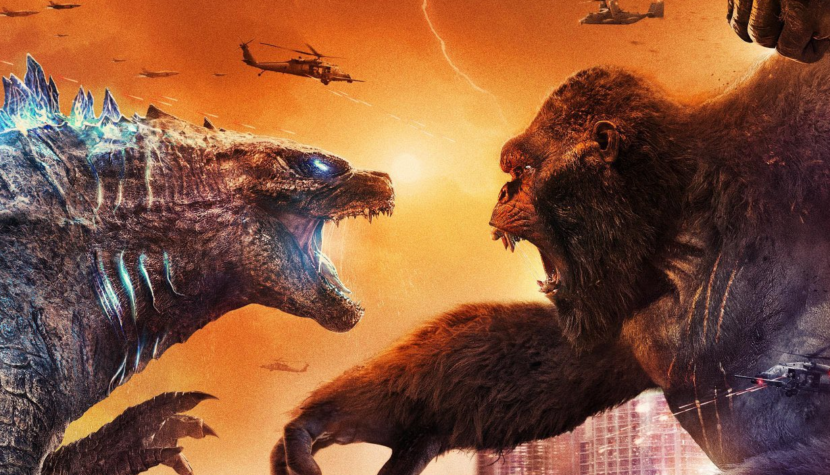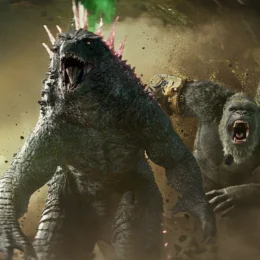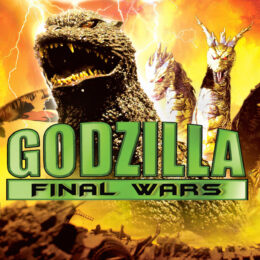GODZILLA VS. KONG. It’s a hit!

We had to wait a long time for this matchup. The MonsterVerse project, which assumes the meeting of two giants of pop culture on the big screen, developed slowly like the steps of Godzilla. As we remember, there was a moment when, with the unsatisfactory results of King of the Monsters, the fate of Godzilla vs. Kong. Later, the premiere was postponed many times due to the pandemic, which put the fans’ patience to the test. I definitely and with constant firmness say that it was worth the wait.
It all started in 2014 with the American reboot of Godzilla by Gareth Edwards. Thanks to the great success of the Marvel Universe, other studios also wanted to have heroes whose worlds could be connected with each other. As we know, the DC universe created by Warner Bros. was very uneven, because sometimes better (Aquaman), sometimes worse (Justice League), while the universe of monsters from Universal Studios, grandly opened on the occasion of The Mummy, turned out to be a total failure. However, the MonsterVerse project from Warner Bros. and Legendary Studios defended itself against the competition with a very consistent pursuit of the goal. And the ability to take artistic risks.

It seems to me very significant that each of the four movies of this universe, i.e. Godzilla, Kong: Skull Island, Godzilla II: King of the Monsters and Godzilla vs. Kong adds something to both its predecessors and the long tradition of monster cinematic performances. In Godzilla vs. Kong, for example, what strikes me is how the film opens. The light-toned sequence, lined with pleasant music, shows a gray day in the life of a great ape. I’m not sure, but this is probably the first film in a long series of Kong and Godzilla appearances in which the monster appears in the very first scene, visible not from behind a tree, not in the dark and only with its roar, but in all its glory, while going about his daily life. In this way, the creators made two things clear at the outset. One thing – that they put aside what has always been the crème de la crème of the series, i.e. the gradation of tension. They probably decided that monsters are already so well known in pop culture that hiding them from the audience would look at least ridiculous. And two – that the title Godzilla vs. Kong does not so much suggest a great skirmish as it makes it clear what are the names of the main characters of the film, standing in its center from the very beginning.
Probably for this reason, there will be voices that the film repeats the mistakes of its predecessors, reducing the role of human heroes to the margin of the narrative. Personally, I don’t see anything wrong with it, I even think that Adam Wingard, the director of the movie, used this procedure on purpose. He wanted to be honest with the audience from beginning to end – he promised a great clash at the top, devoid of far-fetched pathos and unnecessarily developed, pretextual subplots, and that’s what he delivered to the audience. In fact, with all this, he did not fail to surprise with several plot solutions that remain highly original against the backdrop of the long tradition of the series. Suffice it to say that Jules Verne comes to mind during the screening, but not by reference to the expedition to the Mysterious Island, as it might seem at first. I’ve been following Wingard’s filmography since his participation in the horror anthology V/H/S and I find it extremely surprising, first of all, that a director so clearly fond of horror managed to put aside his fascinations and not try again to scare with something that already this fear has long since ceased to arouse. And secondly, that as a director working on relatively modest projects so far, he managed to embrace the entire Godzilla vs. Kong, creating a really very coherent, original, well written, consistently conducted and most importantly, visually monumental work.
Related:
It looks excellent
This is a movie that is 100% fit for the big screen. I haven’t seen such good special effects in a high-budget cinema for a long time. The hair on the body is bristling with those hairs on Kong’s chest or the scales on Godzilla’s body – their precision above all. The design of the monsters deserves credit, and everything that happens next to this process, i.e. movements, clashes, worlds, only emphasizes this effect. The empty laughter in me rises when I remember the screening of King Kong vs. Godzilla from 1962, i.e. the prototype of the reviewed spectacle. There, as we know, we were dealing with the suitimantion technique, consisting in dressing the actors in massive rubber costumes, which today smells so much like a mouse that it’s nice to watch. What a leap forward the field of special effects has made since then can be seen in the latest Warner Bros. production.
The theme of the 1962 film was also slightly different. In the memorable production of the Toho studio, the heroes were journalists who saw the clash of huge monsters as the perfect material for a sensational report. This shows another cultural leap. Today we are so used to the flow of often disturbing information that it is much harder to arouse surprise in us. Hence Wingard’s conscious effort to throw aside the aura of mystery of the titular monsters and turn them into heroes fighting for the right cause of ecological and technological prudence. They can do what a man cannot – fight for their own, restoring balance in nature. We need these guardians.






